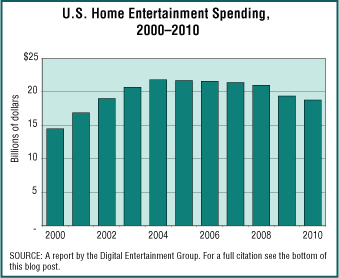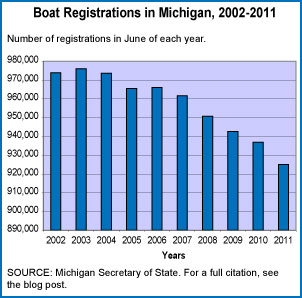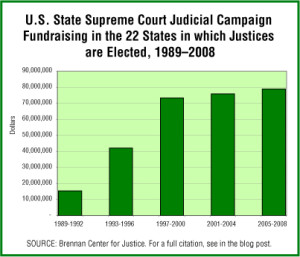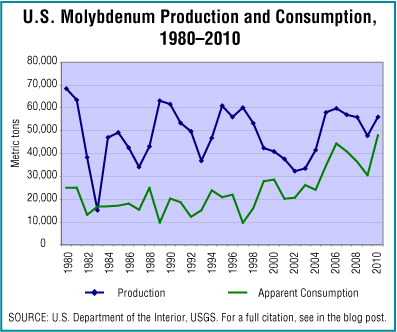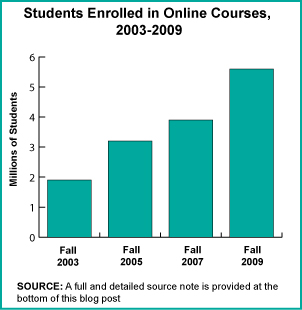
The number of students taking at least some of their classes online has risen steadily throughout the first decade of the 21st Century. In 2003, 11.2% of college and university students took at least one class online. By 2009, 27.4% did. The chart at the right shows the growth in the number of students enrolled in at least one online course in the Fall of each year.
Geographic reference: United States
Year: 2003 and 2009
Market size: Approximately 1.9 million and 5.6 million students respectively
Source: “Entering the Mainstream: The Quality and Extent of Online Education in the United States, 2003 and 2004,” [Abstract], Sloan Consortium, available online here; “Survey Reports: Online Education Grows by Almost a Million Students,” [Abstract], Sloan Consortium, available online here; “Table 176. Total Fall Enrollment in Degree-Granting Institutions, by Level of Enrollment, Sex, Attendance Status, and Type and Control of Institution: 2003,” Digest of Education Statistics: 2005, Spring 2004, available online here; “Table 202. Total Fall Enrollment in Degree-Granting Institutions, by Level of Enrollment, Sex, Attendance Status, and Type and Control of Institution: 2009,” Digest of Education Statistics: 2010, September 2010, available online here.
Graph Source: “Entering the Mainstream: The Quality and Extent of Online Education in the United States, 2003 and 2004,” [Abstract], Sloan Consortium, available online here; “Making the Grade: Online Education in the United States: 2006,” [Abstract], Sloan Consortium, available online here; “Staying the Course — Online Education in the United States, 2008,” [Abstract], Sloan Consortium, available online here; “Survey Reports: Online Education Grows by Almost a Million Students,” [Abstract], Sloan Consortium, available online here.

